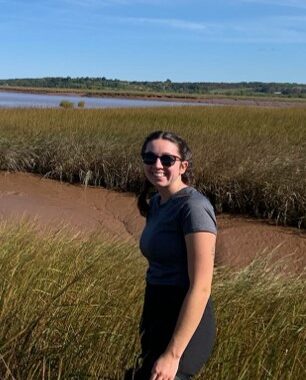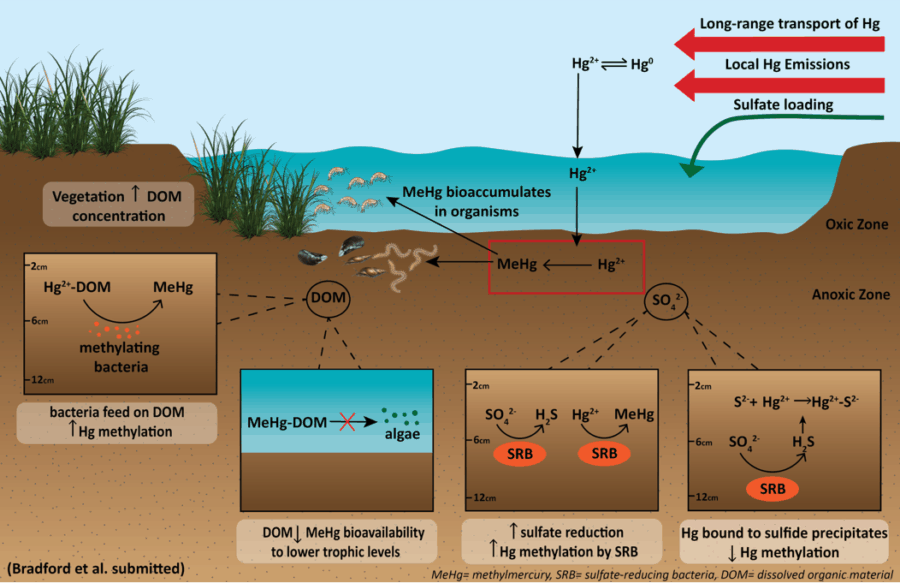
The natural sediment geochemistry of estuaries makes them vulnerable to bioaccumulation of methylmercury (MeHg), a neurotoxin that bioaccumulates in organisms. Intertidal invertebrates are abundant in estuaries and are critical prey sources for migratory birds and fish. Determining uptake of MeHg by invertebrates at the base of a food web helps determine exposure in higher trophic level organisms like fish and birds.

Research Objectives
1. Quantify changes in MeHg bioaccumulation in coastal ecosystems in relation to changes in sediment geochemistry
2. Identify areas with elevated risk for MeHg production and bioaccumulation
Hypotheses:
1.MeHg production will be greater at sites with higher sulfate and organic matter
2.MeHg bioaccumulation will be greater at sites with higher organic matter
Methods:
Sediment cores, porewater, and invertebrates will be collected at four sites in the Minas Basin. Invertebrate MeHg concentration will be compared to DOM concentration, DOM quality, sulphur speciation, and Hg speciation in porewater and sediment.


 Acadia University
Acadia University